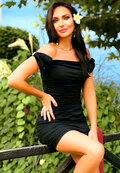By the end of the first millennium AD, eastern Slavic lands started to come under the russian dating moscow influence of the Eastern Roman Empire. By the mid-10th century, there was already a Christian community among Kievan nobility, under the leadership of Bulgarian and Byzantine priests, although paganism remained the dominant religion. Following the tribulations of the Mongol invasion, the Russian Church was pivotal in the survival and life of the Russian state.
Despite the politically motivated murders of Mikhail of Chernigov and Mikhail of Tver, the Mongols were generally tolerant and even granted tax exemption to the church. The reign of Ivan III and his successor was plagued by a number of heresies and controversies. One party, led by Nil Sorsky and Vassian Kosoy, called for the secularisation of monastic properties. In the 1540s, Metropolitan Macarius codified Russian hagiography and convened a number of church synods, which culminated in the Hundred Chapter Council of 1551. This Council unified church ceremonies and duties throughout the Moscow Church. An Old Believer Priest, Nikita Pustosviat, Disputing with Patriarch Joachim the Matters of Faith.
During the reign of Tsar Fyodor I his brother-in-law Boris Godunov contacted the Ecumenical Patriarch, who “was much embarrassed for want of funds,” with a view to establishing a patriarchal see in Moscow. Although Nikon’s far-flung ambitions of steering the country to a theocratic form of government precipitated his defrocking and exile, Tsar Aleksey deemed it reasonable to uphold many of his innovations. During the Schism of the Russian Church, the Old Ritualists were separated from the main body of the Orthodox Church. Russian government, army, dress and manners. He made Russia a formidable political power. Peter was not religious and had a low regard for the Church, so he put it under tight governmental control.
He replaced the Patriarch with a Holy Synod, which he controlled. In the late 17th and early 18th centuries, the Russian Orthodox Church experienced a vast geographic expansion. Orthodoxy, and bring their people with them. In the following two centuries, missionary efforts stretched out across Siberia into Alaska.
Eminent people on that missionary effort included St. The late 18th century saw the rise of starchestvo under Paisiy Velichkovsky and his disciples at the Optina Monastery. During the final decades of the imperial order in Russia many educated Russians sought to return to the church and tried to bring their faith back to life. No less evident were non-conformist paths of spiritual searching known as “God-Seeking”. Sergei Bulgakov, Peter Struve and former Marxists. It is possible to see a similarly renewed vigor and variety in religious life and spirituality among the lower classes, especially after the upheavals of 1905.





